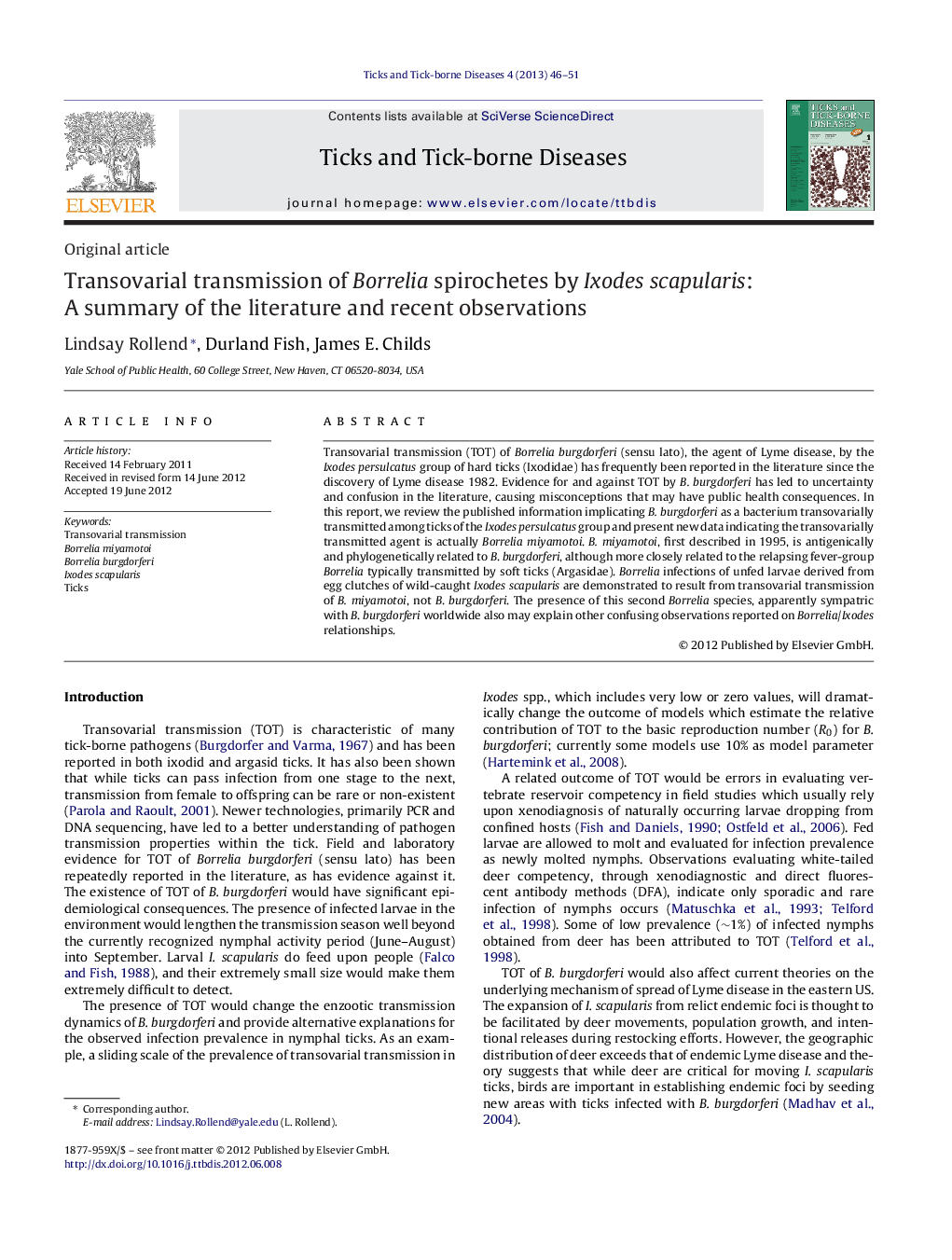| Article ID | Journal | Published Year | Pages | File Type |
|---|---|---|---|---|
| 2474228 | Ticks and Tick-borne Diseases | 2013 | 6 Pages |
Transovarial transmission (TOT) of Borrelia burgdorferi (sensu lato), the agent of Lyme disease, by the Ixodes persulcatus group of hard ticks (Ixodidae) has frequently been reported in the literature since the discovery of Lyme disease 1982. Evidence for and against TOT by B. burgdorferi has led to uncertainty and confusion in the literature, causing misconceptions that may have public health consequences. In this report, we review the published information implicating B. burgdorferi as a bacterium transovarially transmitted among ticks of the Ixodes persulcatus group and present new data indicating the transovarially transmitted agent is actually Borrelia miyamotoi. B. miyamotoi, first described in 1995, is antigenically and phylogenetically related to B. burgdorferi, although more closely related to the relapsing fever-group Borrelia typically transmitted by soft ticks (Argasidae). Borrelia infections of unfed larvae derived from egg clutches of wild-caught Ixodes scapularis are demonstrated to result from transovarial transmission of B. miyamotoi, not B. burgdorferi. The presence of this second Borrelia species, apparently sympatric with B. burgdorferi worldwide also may explain other confusing observations reported on Borrelia/Ixodes relationships.
